Fiber artist Susan Lenz uses hand stitching and self-guided free motion embroidery to create her eclectic range of masterful work. She studied under several internationally acclaimed artists including Charlotte Miller, Jan Beaney and Jean Littlejohn.
Born and raised in the Midwest of the United States, she now lives in Columbia, South Carolina where she has both a ‘home’ studio and a fiber art studio at Gallery 80808/Vista Studios. Susan’s themes include memory, universal mortality, and personal legacy.
In part one of our two part interview with Susan she tells to us about her route to becoming a fiber artist, the value of having a mentor and how she uses her two studios to produce different types of work.
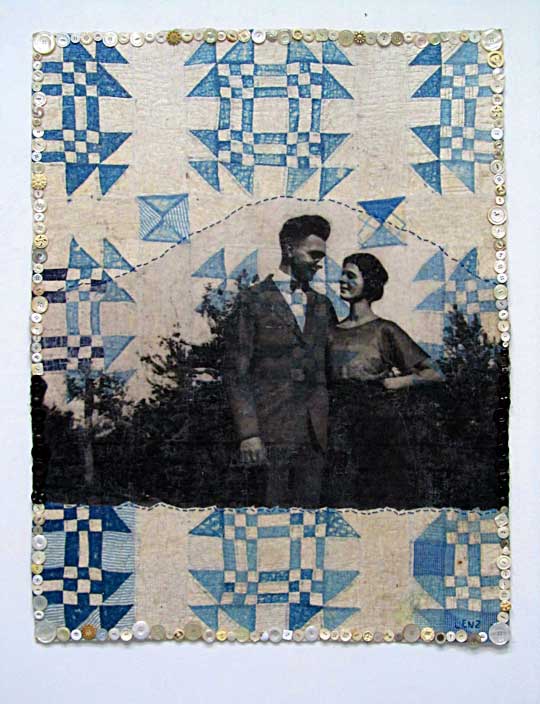
TextileArtist.org: What initially captured your imagination about textile art?
Susan Lenz Dingham: I certainly didn’t fall in love with fabric and stitch as a young girl. In fact, my only two early experiences with needlework were both disastrous. At age eight, my Girl Scout troop was introduced to embroidery. We all had to cross stitch a radish printed on cheap white material. To me, they all looked exactly alike. To my Scout leader, the back of mine was a total mess. I just didn’t understand why it would matter especially since the front wasn’t much either.
My Grandma tried to get me to stitch a little doily. I was about ten years old and saw no point in making it look just like the photograph. Of course, this attitude meant my stitching wasn’t very thoughtful. Grandma continually smacked my hand, pulled out everything I had done, and forced me to try again. I hated it.
So, I have no idea why I thought I could master embroidery as a married adult. My husband and I were in graduate school and went to the Ohio State Fair. I saw the needlework and remarked, “I could do this” and “I could do that”. Steve said, “Put your money where your mouth is”. Later I repeatedly checked out the Reader’s Digest Complete Guide to Needlework and learned each project. Some I liked. Some I didn’t like, but the most important thing was feeling the thread in my hands and the thrill of seeing the work progress.
A love of fiber and stitch
Within a year I was introduced to the Embroidery Guild of America. I attended a few annual, national conventions where I took a few workshops. In 1996 the annual convention was held in New Orleans. I enrolled in a class with Charlotte Miller called ‘Autobiography in Stitches’. I signed up for the class because I thought I might know something about it; it was called ‘autobiography’ after all. Had anyone ever said, “This is a design class”, I would have totally freaked out. I didn’t think I could ‘design’ anything. I hadn’t been in an art class since junior high school. Charlotte Miller was the perfect teacher for me. She never said the “big, bad D word … DESIGN”. She told us to “arrange our elements”. I’m a natural ‘arranger’ and the week was amazing on too many levels to name.
Yet, one thing certainly stands out. The entire convention was absolutely going nuts over two British tutors: Jan Beaney and Jean Littlejohn. At the time, I’d never heard of them or seen anything like the work they were doing. Well, on the last day of the workshop, Charlotte Miller took her class to visit their classes. I was at least twelve feet from a big round table full of the most beautiful fabric and samples I’d ever seen. It was love at first sight. On the spot, I vowed never to stitch another pattern or kit and promised myself that I was going to spend the rest of my life making ART like that.
It was not a difficult promise to keep. The work belonged to Jean Littlejohn. It took another two years before I was in a class with Jean. I’ve taken three other workshops with ‘Double Trouble’. The last was in Alaska. It was another eye-opening experience. On the last day Jean remarked to Jan that I’d make a great pupil in their classes back in England. Instantly I was flattered, embarrassed, honored, and horrified. Of course, I knew how to act appropriately but the negative feelings lingered. It took another six months before I figured out why my mind was so offended. I had to admit to myself that I didn’t want to be someone whose work reflected anyone else’s training too closely; I didn’t want to be a student. More than that, I wanted to be an artist; I want to be a peer to Jan and Jean and all the other great fiber artists. As someone who suffers from an inferiority complex and plenty of feelings of self doubt, this was a very hard realization for me but it propelled me in the right direction. It wasn’t long before I rented my own studio and started entering juried art shows and started growing into a professional artist in my own right. It’s been an adventure and every day has new challenges. I love fiber and stitch because it is the best of me and the best way I can express all my concerns.
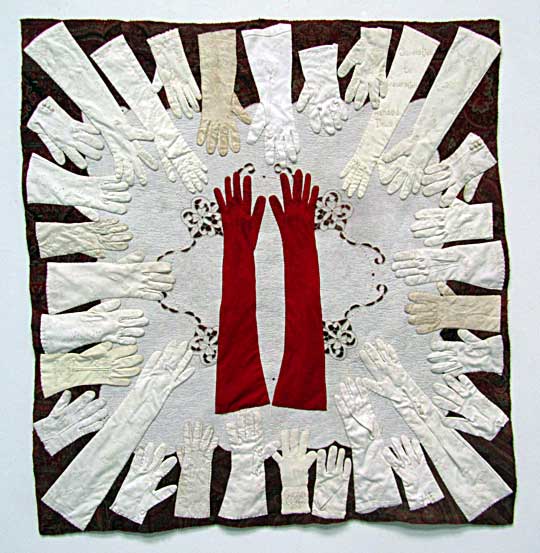
Navigating ‘politics’ and ‘pettiness’
What or who were your early influences and how has your life/upbringing influenced your work?
Obviously from above: Charlotte Miller, Jan Beaney, and Jean Littlejohn but also Valerie Campbell Harding. While in New Orleans I bought the Bernina 1630 that was our classroom demo model. I had no idea how to use it but the School of Advanced Study at the Embroiderer’s Guild of America’s National headquarters in Louisville, KY had a workshop within a year or so. I got lucky and managed to get a spot in the class after someone else cancelled inside of a week. (I’d been on the wait list and was the only person who could arrange to come on such short notice! Lucky me!) So, Valerie Campbell Harding taught me how to use my machine during the only time she taught in the USA. That class was WONDERFUL!
What was your route to becoming an artist? (Formal training or another pathway?)
Obviously, most of this is above but I am also fortunate to have a great mentor, Stephen Chesley. Stephen Chesley has been a self supporting landscape oil painter for the last twenty-five or thirty years. His studio is now across the hallway from mind. His advice on conducting a professional artistic career is always hard and spot-on! He is generous, truthful, honest, and supportive. From the very beginning, he had me keep an inventory book, document everything, start a resume, and he still keeps my head screwed on straight with regular tips on how to best navigate the inevitable ‘politics’ and ‘pettiness’ and other issues surrounding a professional art career.

Inspired by found objects
What is your chosen medium and what are your techniques?
I’m not exactly sure I understand this question. This is a fiber arts website, right? My chosen medium is fibers! LOL! I pretty much like all fibers. Okay, I don’t generally use them in the ways most might expect but I still like them! Let’s just say: I don’t knit, crochet, tat, weave, dye, batik, spin, create wearables or anything functional, or design for commercial applications. I do stitch. I love hand stitching and self-guided free motion embroidery. I accidentally started making art quilts in 2008 – My Decision Portraits are ‘art quilts’… three layers held together with stitch) but I was making the twelfth or thirteenth before it was pointed out that this was the definition of an art quilt. There are now 108 pieces in this series and they are currently on display as a solo show at Vision Gallery in Chandler, Arizona. They’ve had several other solo shows before this one. I also enjoy using fibers in my installations and in my 3D mixed media assemblages. The techniques I use are determined by the concept I am trying to convey and how I think I might best do this. I am often inspired by the found objects and vintage materials that sneak into my stash.
How would you describe your work and where do you think it fits within the sphere of contemporary art?
Generally my work is conceptually driven and meant to articulate the accumulated memory inherent in discarded things. I seek a partnership with my materials, their purposes, values, and familiar associations. Memory, universal mortality, and personal legacy are central themes. I am very much in touch with artists working in other media expressing concern over vanishing environments and the potential loss of history’s lessons. Much of my work also is strongly part of the feminist art movement.

Tell us a bit about your process and what environment you like to work in?
I work almost constantly. I always have and I don’t know how to exist otherwise. Thus, I generally have more than two or three projects going on simultaneously. I enjoy working toward long term goals but also having something smaller on which to find a ‘quick fix’ of ‘completion satisfaction’.
Generally, I have at least one project requiring hand stitch. This is something that I do in the evening while my husband is watching television (He controls the remote. If it weren’t for him, I wouldn’t have a TV!). These hand stitching projects are also essential for riding in the car or travelling by train or plane.
I also have gallery representation. Galleries carry my ‘In Box’ and ‘Stained Glass’ series. Thus, I am usually working on at least one of these pieces. Although I can and do work ‘anywhere’, I prefer to be in one of my studios. Yes, I’m very, very lucky. I have both a home studio for 3D assemblages and an off-site studio at Gallery 80808 which is about a mile from my home. The reason for two settings is simple. My home is also my business, Mouse House Inc., a limited service custom picture framing establishment since 1987. Here I have saws, drills, and all sorts of tools and hardware. It only makes sense to ‘build’ things near the tools. My off-site studio is like a sacred place for my Bernina sewing machines, iron, stash of vintage materials and everything else. Nothing happens there except ART.
What currently inspires you and which other artists do you admire and why?
Currently I have lots to do! My work has been accepted into the Washington Craft Show and the Philadelphia Museum of Art Craft show, both in November. The same series of work has also been accepted in my state’s art biennial… also in November. I have a solo show with totally different work… also in November. Right now, I admire any artist who has made the jump to being self-supportive. I still have a ‘day job’ and my schedule would be much easier if I didn’t need it!
For more information on Susan Lenz please visit: susanlenz.com
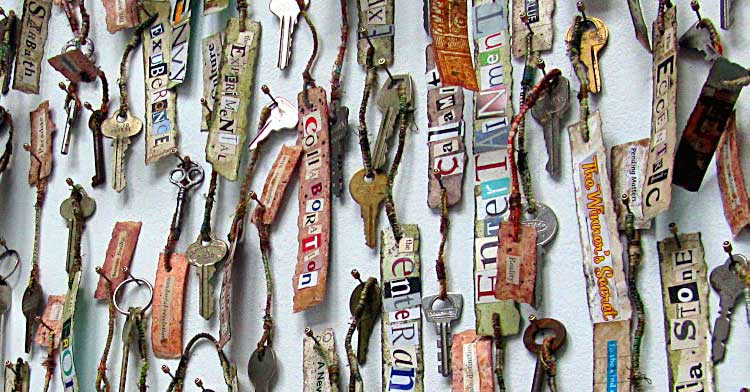
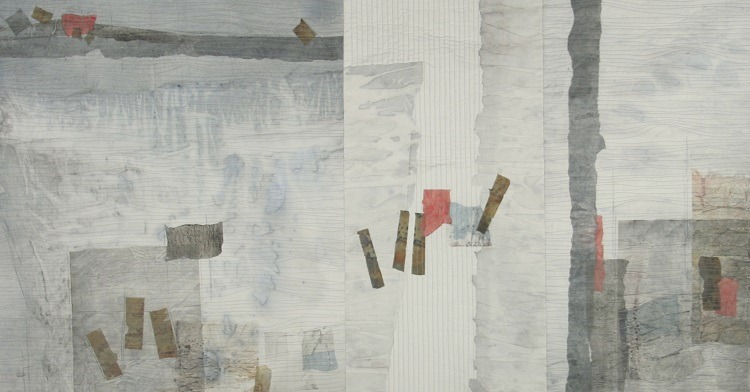
![Contemporary textile artist Lisa Soloman featured image||Lisa Soloman - Sen [1000 doilies]](https://www.textileartist.org/wp-content/uploads/Lisa.jpg)
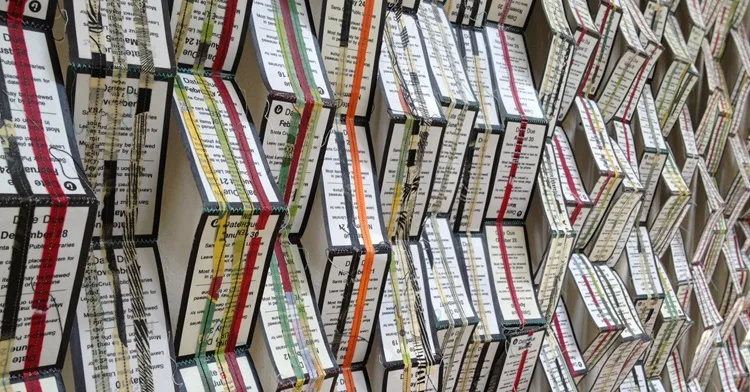
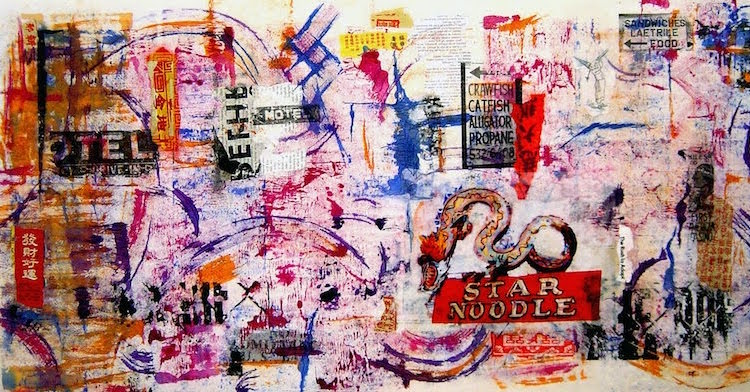
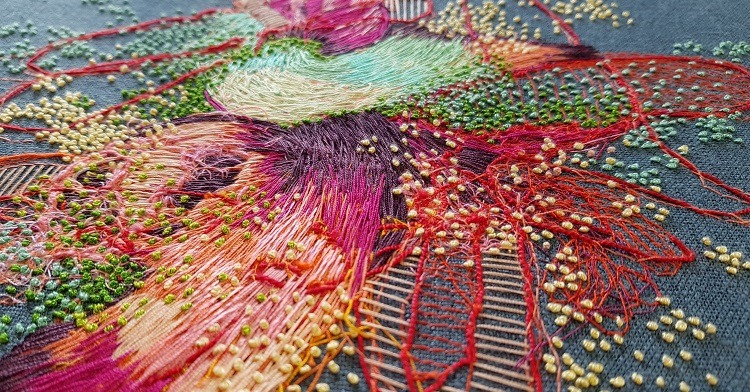
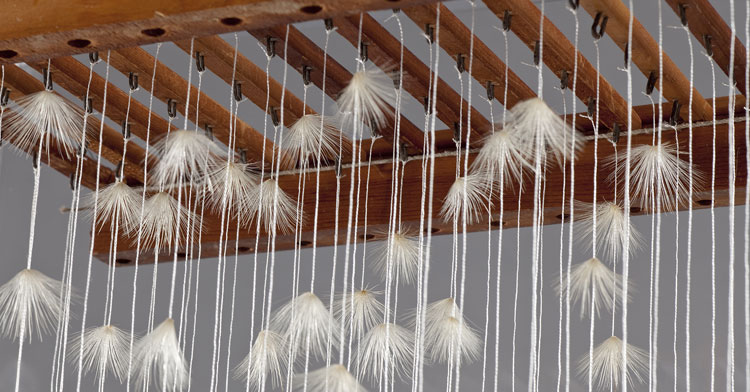
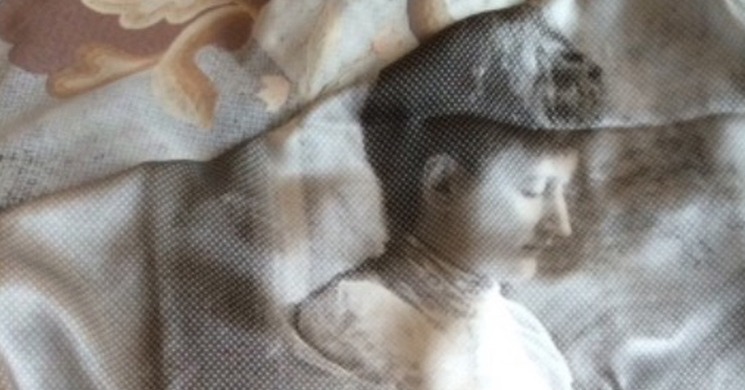
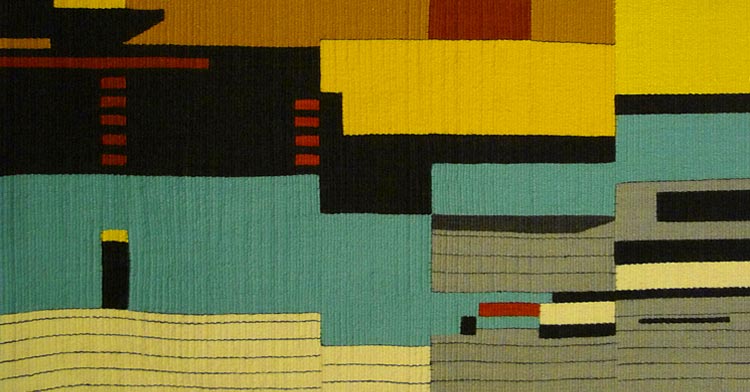
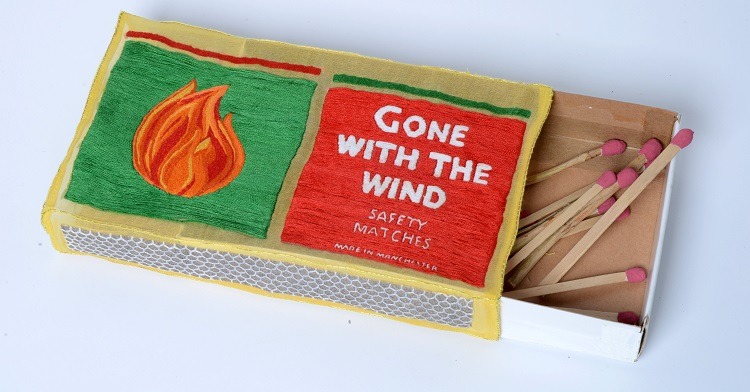
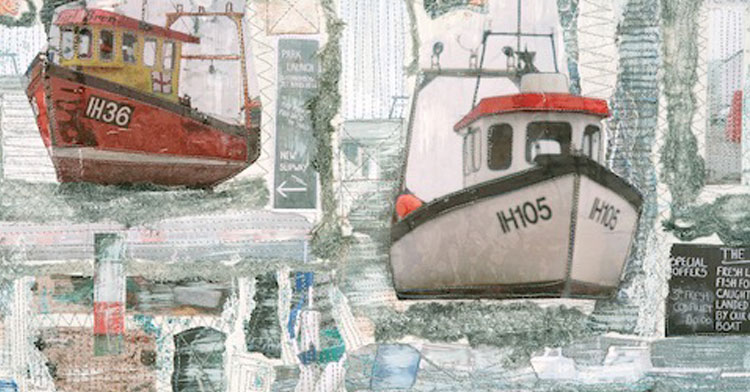
Comments